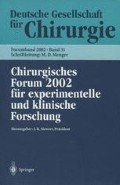Abstract
Despite decades of investigations, mechanisms initiating liver regeneration after major tissue loss remain poorly understood. The release of pro-inflammatory cytokines (Tumor necrosis factor α, TNFα, and Interleukin 6, IL-6) by Kupffer cells following systemic endotoxemia induced by partial hepatectomy (PH) have been implicated as important factors initiating hepatocytes proliferation. To determine the impact of the inflammatory phenomena and the pathway triggering the initiation of liver growth, we studied the effect of PH in mice lacking type I intracellular adhesion molecules (ICAM-1). Methods: C57BL/6 (wild type) and ICAM-1 deficient mice were subjected to 70% hepatectomy. Regeneration was determined at day 2 and day 4 after partial hepatectomy by PCNA staining (G1-phase), BrdU incorporation (S-phase), and mitosis (M-phase) in 30 high power fields. Involvement of Kupffer cells and pro-inflammtory cytokines was evaluated measuring TNFα and IL-6 proteins expression in liver tissue 3 h after PH. The impact of leukocytes recruitment was evaluated by numbers of leukocytes clusters infiltrated in remnant liver, at the same time point (3 h after PH) in 30 high power fields. Results: Following 70% hepatectomy, all three markers of regeneration are significantly decreased in ICAM-1 mice compared to wild type at day 2 and day 4, Table 1. Subsequently a decrease in TNFα and IL-6 protein levels was observed in ICAM-1 deficient compared to wild type mice (82 vs. 55 pg/mg,p = 0.045 and 218 vs. 149 pg/mg). Furthermore, numbers of leukocytes clusters infiltrated in the liver tissue are significantly lower in ICAM-1 deficient mice compared to wild type mice (0.25 vs. 3.75 clusters per 30PF.p = 0.038). Finally, pretreatment of ICAM-1 mice with recombinant IL-6 normalized all three markers of regeneration. Conclusion: These data demonstrate that ICAM-1 and leukocytes recruitment plays important roles in induction of early phase of liver regeneration following PH, most likely by mechanisms involving pro-inflammatory cytokines release by Kupffer cells.
Access this chapter
Tax calculation will be finalised at checkout
Purchases are for personal use only
Literatur
Yamada Y, Kirillova I, Peschon JJ, Fausto N (1997) Initiation of liver growth by tumor necrosis factor: Deficient liver regeneration in mice lacking type I tumor necrosis factor receptor. Proc Natl Acad Sci USA 94: 1441–1446
Cressman DE, Greenbaum LE, DeAngelis RA, Ciliberto G, Furth EE, Poli V, Taub R (1996) Liver failure and defective hepatocyte regeneration in interleukin-6-deficient mice. Science 274: 1379– 1383
Selzner M, Camargo C, Clavien P-A (1999) Ischemia impairs liver regeneration following major tissue loss in the rodent. Hepatology 30: 469 - 475
Author information
Authors and Affiliations
Rights and permissions
Copyright information
© 2002 Springer-Verlag Berlin Heidelberg
About this paper
Cite this paper
Selzner, N., Selzner, M., Rüdiger, H.A., Clavien, PA. (2002). Leukozyten-ICAM-1 Bindung induziert Leberregeneration nach partieller Leberresektion. In: Chirurgisches Forum 2002. Deutsche Gesellschaft für Chirurgie, vol 31. Springer, Berlin, Heidelberg. https://doi.org/10.1007/978-3-642-56158-0_62
Download citation
DOI: https://doi.org/10.1007/978-3-642-56158-0_62
Publisher Name: Springer, Berlin, Heidelberg
Print ISBN: 978-3-540-43300-2
Online ISBN: 978-3-642-56158-0
eBook Packages: Springer Book Archive

